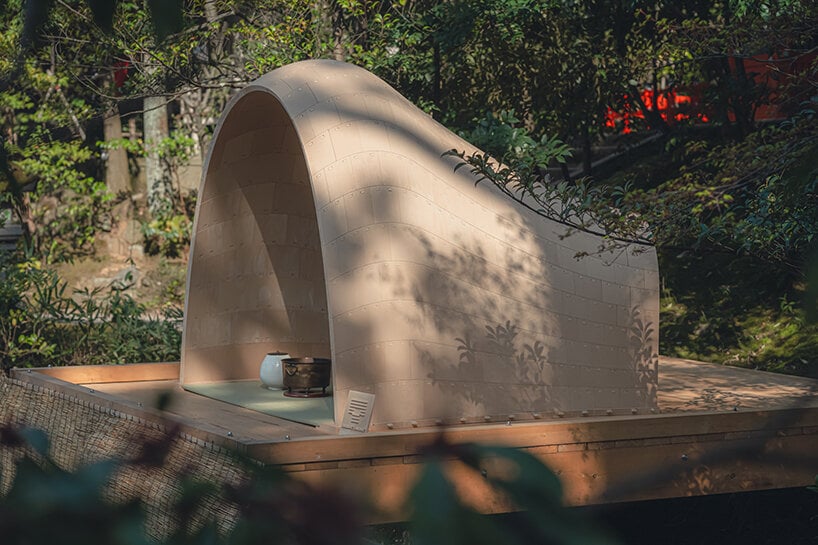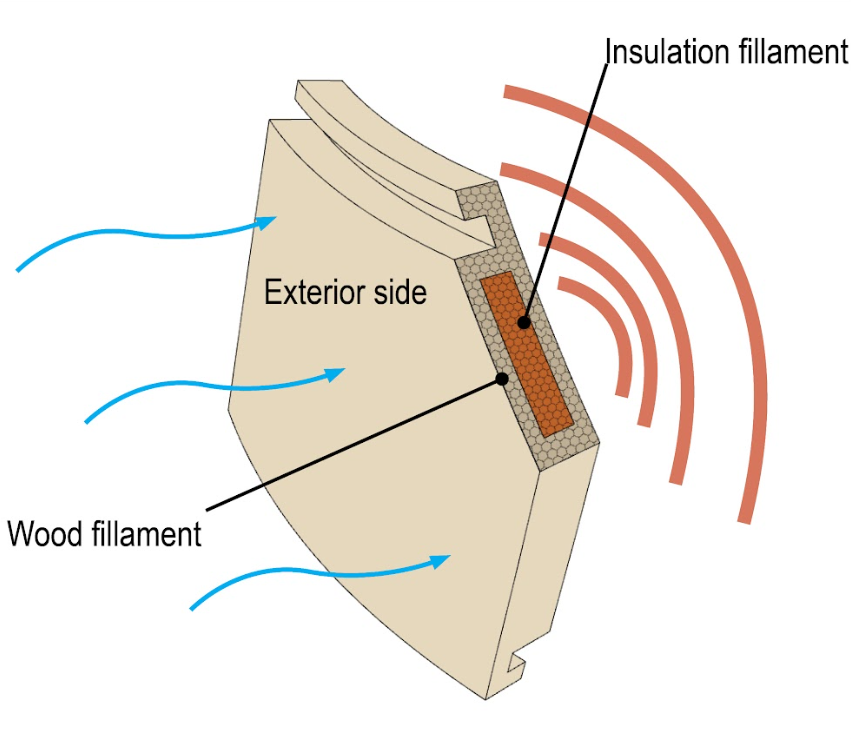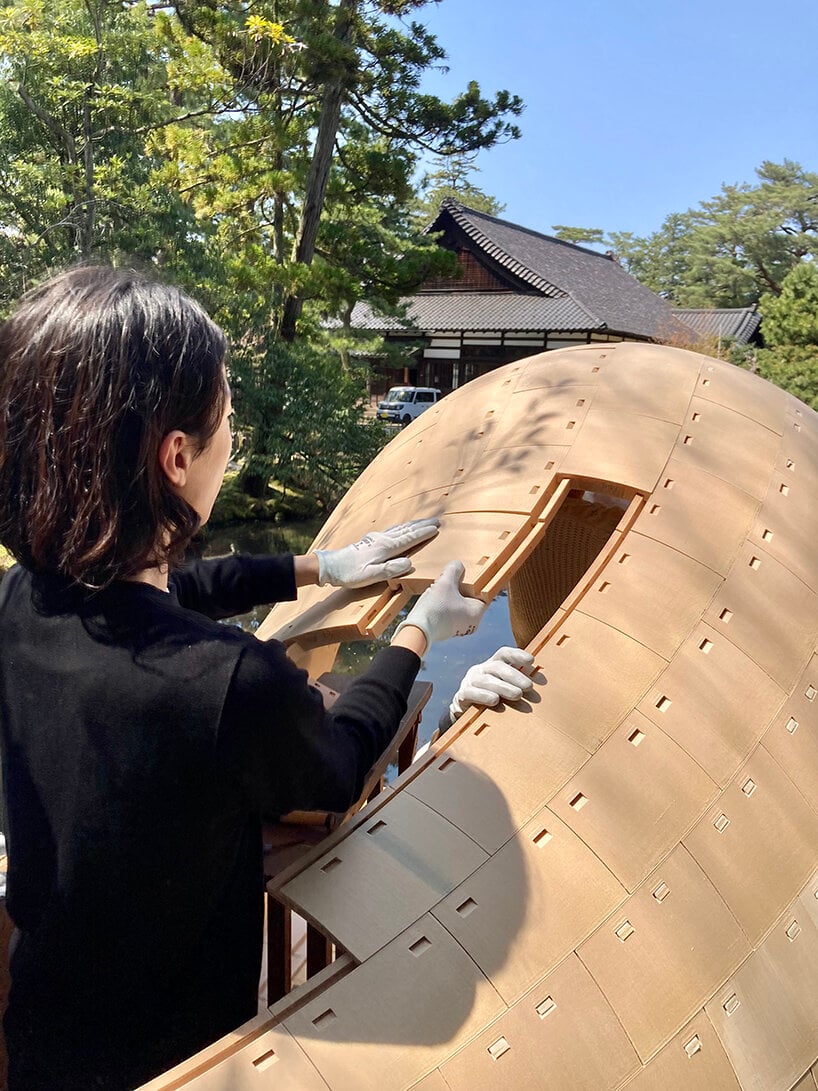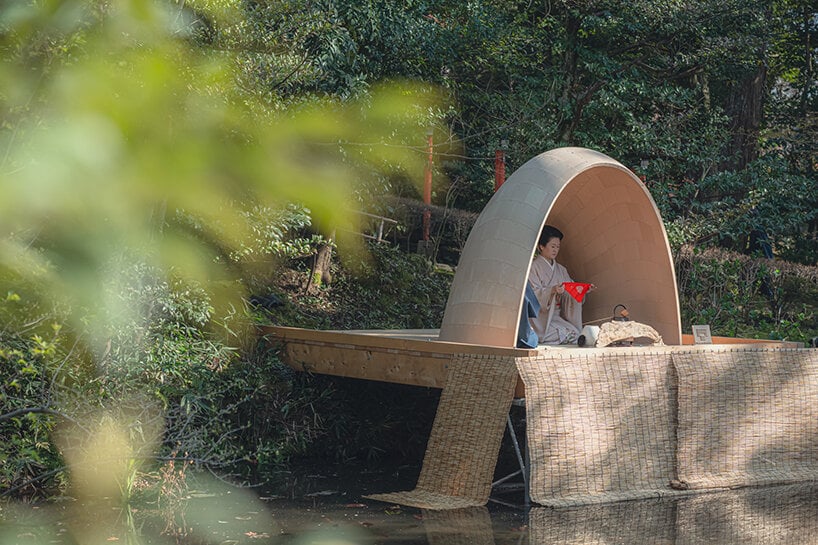A pair of architects in Japan have been working on combining traditional Japanese joinery methods with modern manufacturing and materials, to create a process for building modular structures without the need for additional means of fastening.
As a showcase of their patented “Tsuginote joint” system, Kei Atsumi and Nicholas Préaud have constructed the Tsuginote Tea House, which you can see in the image below.

The 900+ unique, double-curved pieces of the pavilion were 3D printed using wood-based PLA filament on the outside of the panels, an insulating filament on the inside, and assembled without the need for glue or metal fittings, as per traditional Japanese woodworking methods. Their initial phase of research in architecture and construction systems drew significant inspiration and momentum from the traditional Japanese Tsugite and Shiguchi assembly methods utilized for frame structures.
The pavilion’s design incorporates Japanese wood joinery with compact 3D printing technology, promoting a shift from a massive structure-oriented system to a module-oriented one. The study highlights the potential for 3D printing technology to create innovative, sustainable, and modular structures at reduced material and labor costs.

The use of 3D printing technology in the construction industry can revolutionize the industry by creating unique, modular structures with a lower environmental impact and greater accessibility. The Tsuginote Tea House demonstrates how additive manufacturing can be applied in the production of architectural-scale volumes.
“This innovative endeavor in the architectural world proposes a new architectural production model through the fusion of digital fabrication technology and traditional building techniques,” said Atsumi.
“I believe that this work can offer new perspectives and inspiration to your readers interested in Japanese architecture and design”.

The use of Japanese wood joints in 3D printing allows for the creation of intricate structures that were previously impossible to achieve by hand, and can provide a solution to the challenge of the printable build volume limit. The structures can be designed parametrically, and the exterior can be finished in a number of ways, including the addition of solar panels.

The Tsuginote Tea House, exhibited at the Kanazawa Shrine in Japan, showcases the potential of 3D printing technology in architecture to address technical and environmental parameters that could confer an innovative character to the system.
Come and let us know your thoughts on our Facebook, Twitter, and LinkedIn pages, and don’t forget to sign up for our weekly additive manufacturing newsletter to get all the latest stories delivered right to your inbox.









